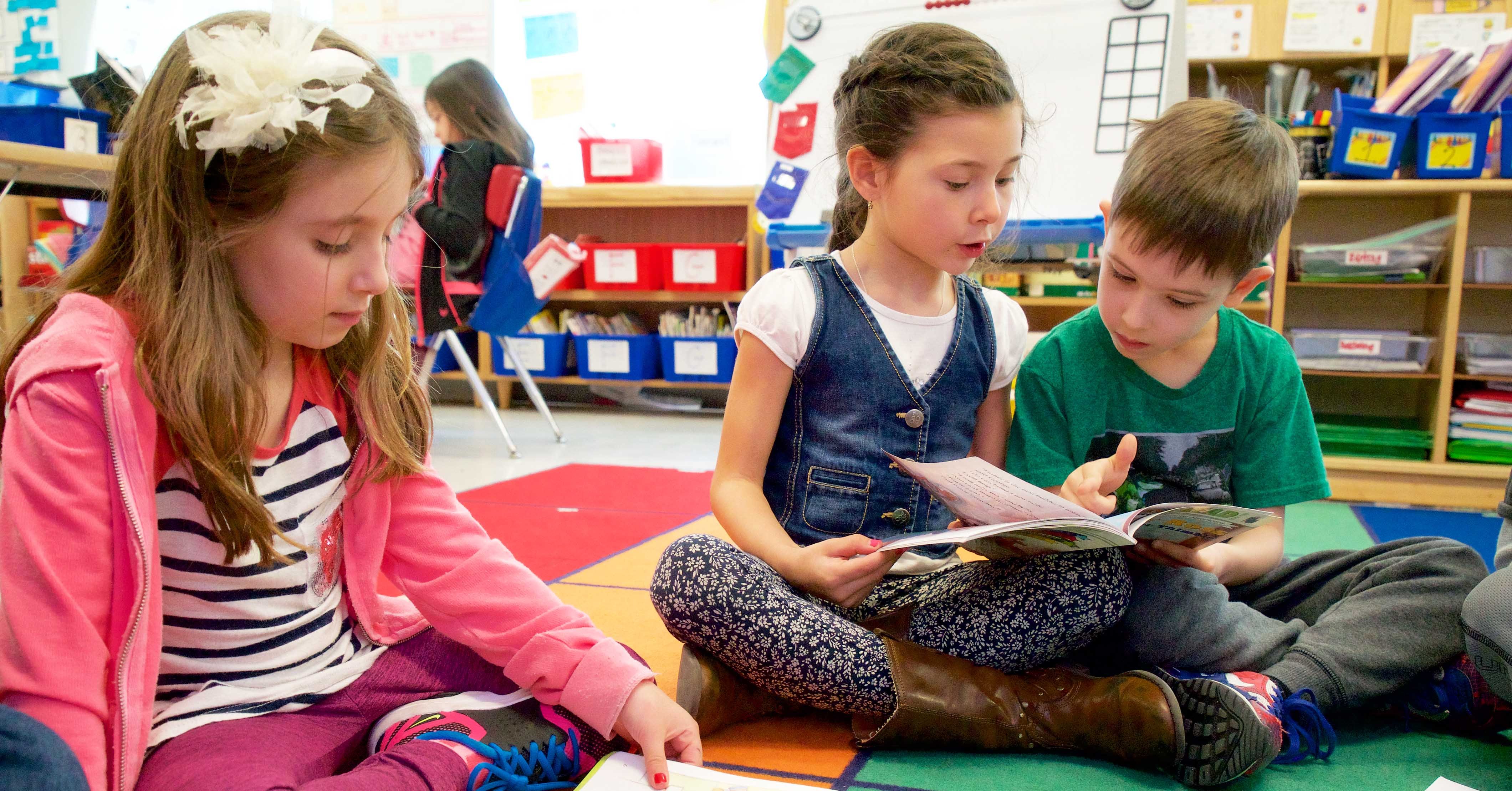
“There have been so many books written oh how to lead small groups in the precisely right ways that too many teachers approach a little hub of readers, gripped by anxiety over doing this The Right Way. Meanwhile, the whole point is to be personal, to be responsive, and to channel kids to do some work while you observe and coach.” Lucy Calkins, A Guide to the Reading Workshop, Primary Grades p. 103
If you could time travel back in time ten or twenty years to visit classrooms during reading time you would likely see many where teachers followed tightly planned guided reading lessons where one book at a time was offered to each group of readers. These books were usually selected by the teacher based mainly on the children’s reading levels. Often the lesson began with an elaborate and multi-part book introduction. In many of these classrooms of yesteryear, the books, one at a time, would be added to a child’s book box to read independently. Often, these guided reading books were the only books children might read during the school day.
Fast forward to today, and in many schools you’ll see vestiges of this way of planning small group work—tightly controlled, mostly focused on reading levels. But you’ll also see classrooms where small group work is far more flexible, responsive to student choices and interests, and gives teachers many more options concerning the methods and materials to use with each group of students. Today, small group work can take far more into consideration than reading level alone, and heterogeneous, strategy-based grouping is as common as reading-level based groups.
How do these classrooms do it? First, teachers take into account their observations and individual conferences with readers, reading books that they’ve selected with support from their peers and teacher. Teachers in these classrooms study the next steps for each individual reader, and students with similar next steps can easily be called together for a quick strategy lesson. Even students who read at a range of levels might be in need of practice with similar strategies and can be pulled together for a brief strategy lesson. The model is similar to conferring-- adapted to be used with a group rather than one student alone.
Key Features of Small Group Instruction (A Guide to the Reading Workshop, p. 104)
-
Engagement is high.
-
Group work is brief.
-
Small groups are heavy with student work, and low on adult talk.
-
The more the kids move, the more the work sticks.
These small groups can be pulled during reading workshop, while the rest of the students continue their independent reading. These groups are flexible, usually planned on a week-to-week basis, sometimes even pulled together in the moment, rather than planned in advance, based on teacher research that reveals several students in need of the same support that day.
Not only can teachers be flexible with what is taught to a small group of students, but also how it is taught can be differentiated according to how much teacher scaffolding, or how much student independence is appropriate for the students in that group.
Consider these methods for small groups work, in order of least teacher support/most student independence, all the way to most teacher scaffolding/least student independence.
Methods to Consider for Small Group Work:
Inquiry
Teacher invites students to solve a problem, explore a question, gather information, or find strategies that work. Ex. “When you are reading, how do you know how the character feels?”
Coaching or Guided Reading
Teacher gives students a brief introduction to the text, highlighting predictable tricky spots, and brief, lean prompts, as students read to remind them to put strategies into practice. Ex. “Check the picture... Did that make sense?.... Check the first letter….Look all the way through the word… You try it…”
Demonstration (Modeling)
Teacher models or acts out the strategy being taught, thinking aloud about his/her work along the way. Ex. “Watch how I jot down important information after I read this paragraph from my book.” Then teacher opens her book and starts reading, with kids watching, jots on sticky notes and explains what she’s doing, with kids watching.
Shared Reading
Teacher and students read a text together, with teacher facilitating by pointing to the words, coaching students to read successfully, or preparing the text in some way to encourage particular kinds of reading work. Ex. Teacher covers the endings to words in a familiar big book, to direct students’ attention to the beginning part of the word and predict the ending parts to figure out the covered words.
Reading Aloud
Teacher reads aloud and thinks aloud to demonstrate their own understanding of the book. Students are given opportunities to talk and/or write, sketch, act parts out to articulate their thoughts and extend their thinking about the book
Telling/Explaining
Teacher gives a “mini lecture” to explain or share content in an expressive, engaging, memorable way. Often visuals such as charts, pictures, or even videos are used; drama or action may be involved.
These methods can be used alone or in combination to find the right amount of support and independence to differentiate for the particular students being taught.
Want to learn more about flexible small group work, that is “no big deal?” Each Wednesday night at 7:30 pm EST the Teachers College Reading and Writing Project hosts a Twitter chat using the hashtag #TCRWP. Join hosts Brittany Nocito @brittanynocito and Noelle Thiering @noellethiering to chat about teaching small groups effectively and efficiently.
Not on Twitter? Take Heinemann’s free Twitter for Educators course here.
 Elizabeth Moore, literacy consultant and coauthor of two books in the Units of Study for Teaching Writing and Units of Study for Teaching Reading series, has been a first grade teacher, fifth grader teacher, literacy coach, and lead staff developer at TCRWP. She has also served as an adjunct instructor in the Department of Curriculum and Teaching at Teachers College, Columbia University. Currently she lives in the mountains of northern Vermont where she finds adventure around every corner.
Elizabeth Moore, literacy consultant and coauthor of two books in the Units of Study for Teaching Writing and Units of Study for Teaching Reading series, has been a first grade teacher, fifth grader teacher, literacy coach, and lead staff developer at TCRWP. She has also served as an adjunct instructor in the Department of Curriculum and Teaching at Teachers College, Columbia University. Currently she lives in the mountains of northern Vermont where she finds adventure around every corner.
She can be found writing on Two Writing Teachers and on Twitter at @BethMooreSchool


